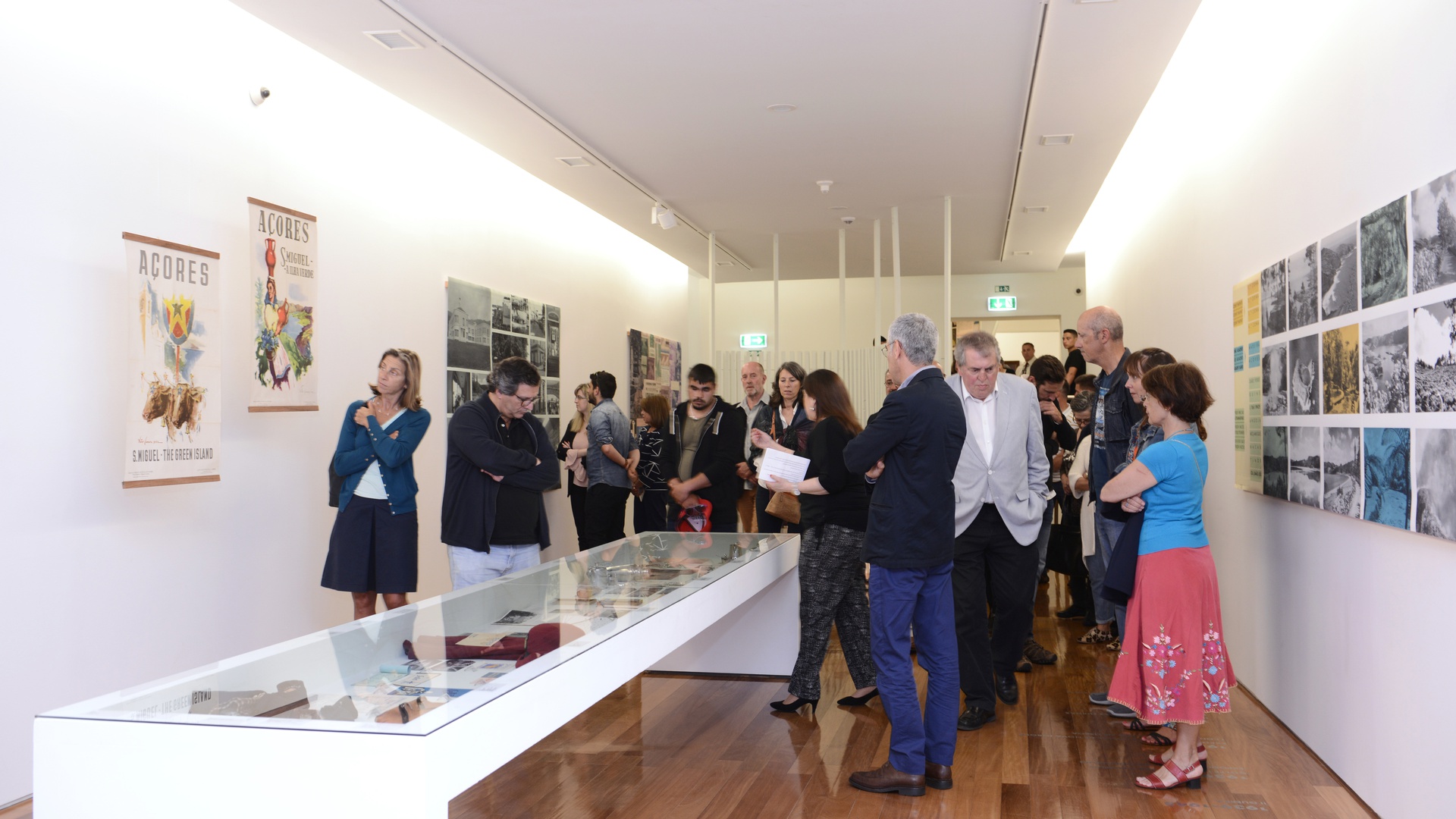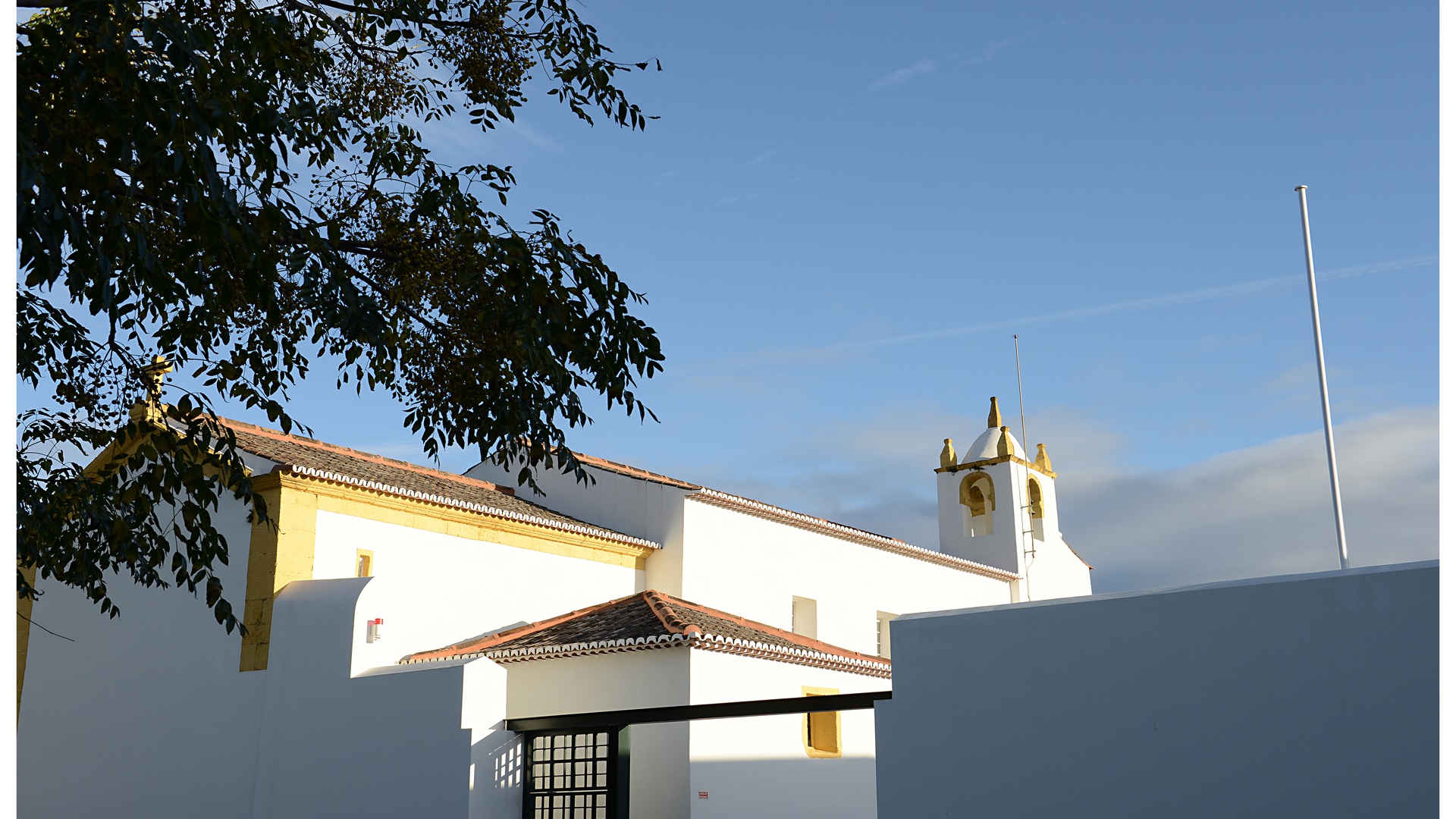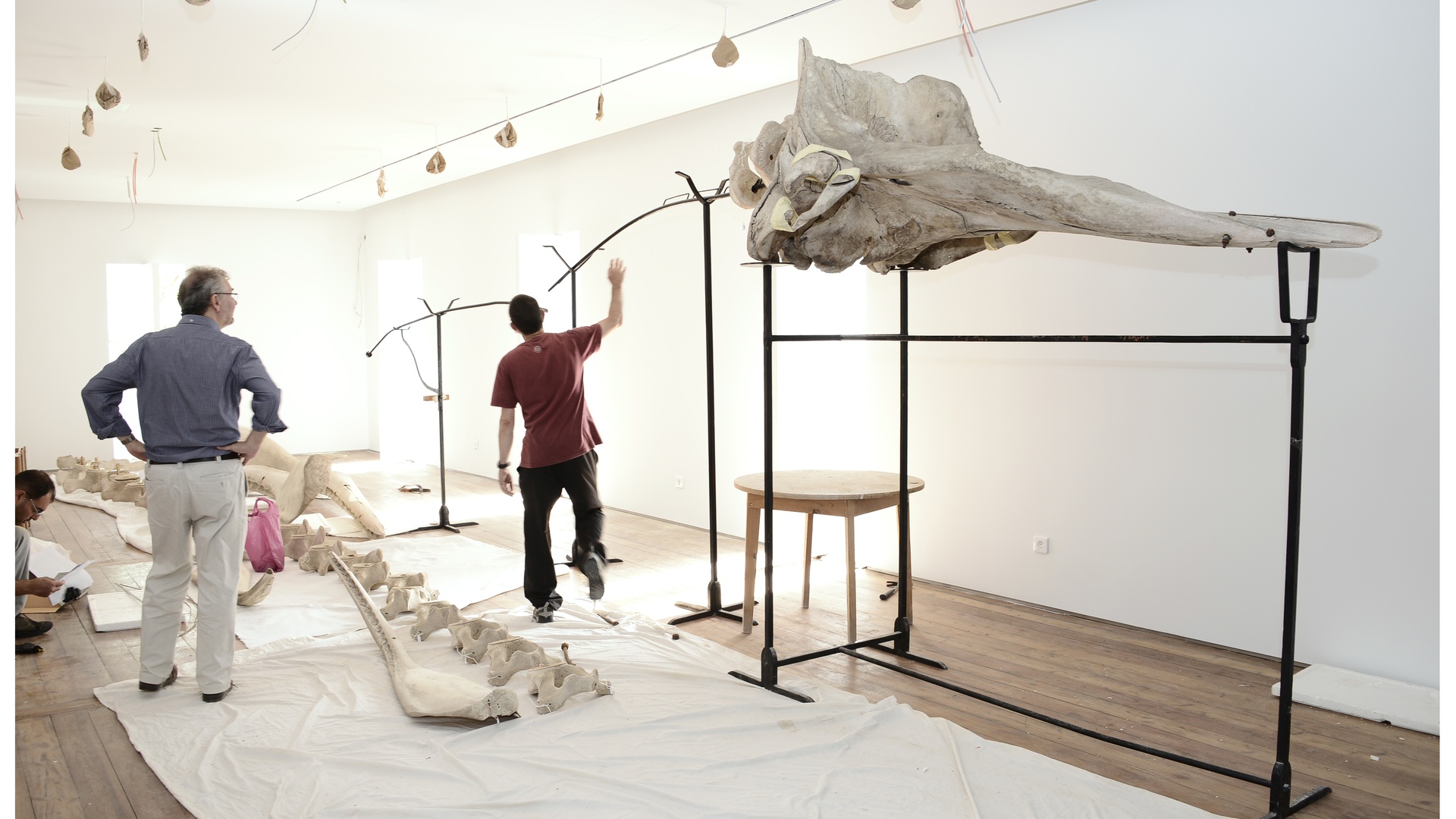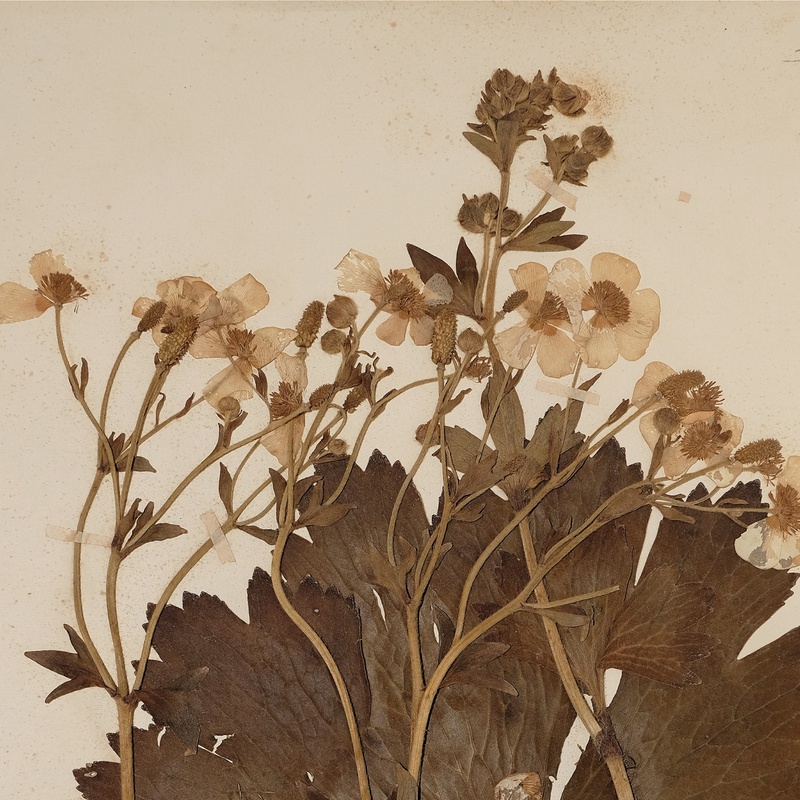
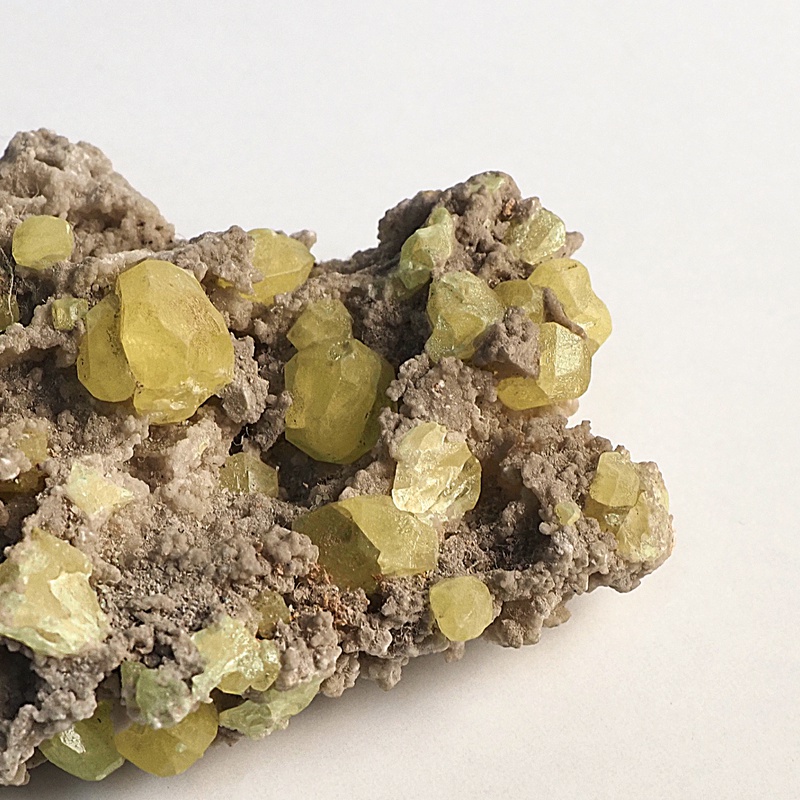
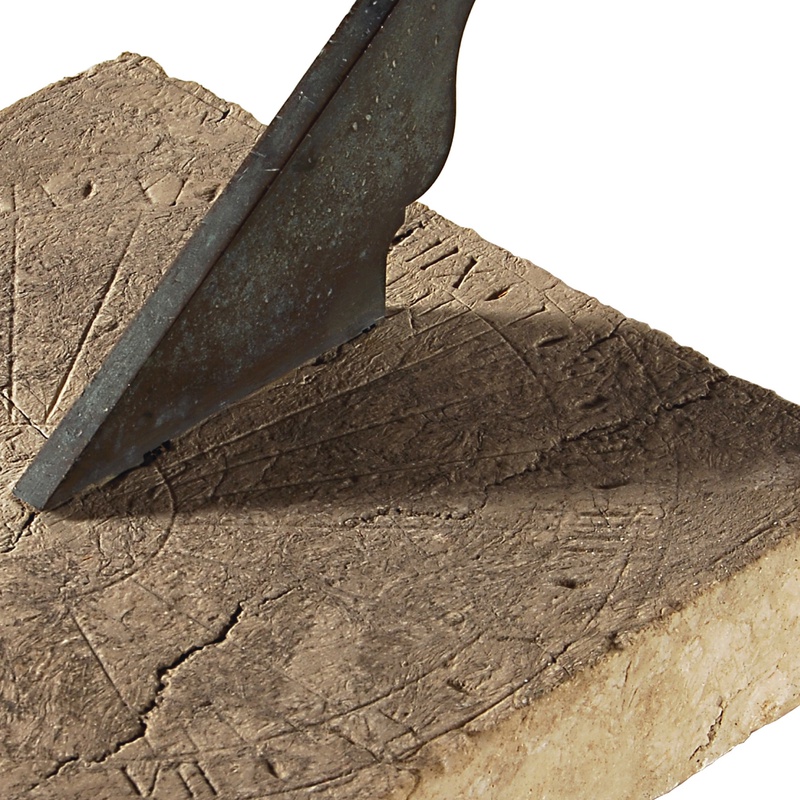
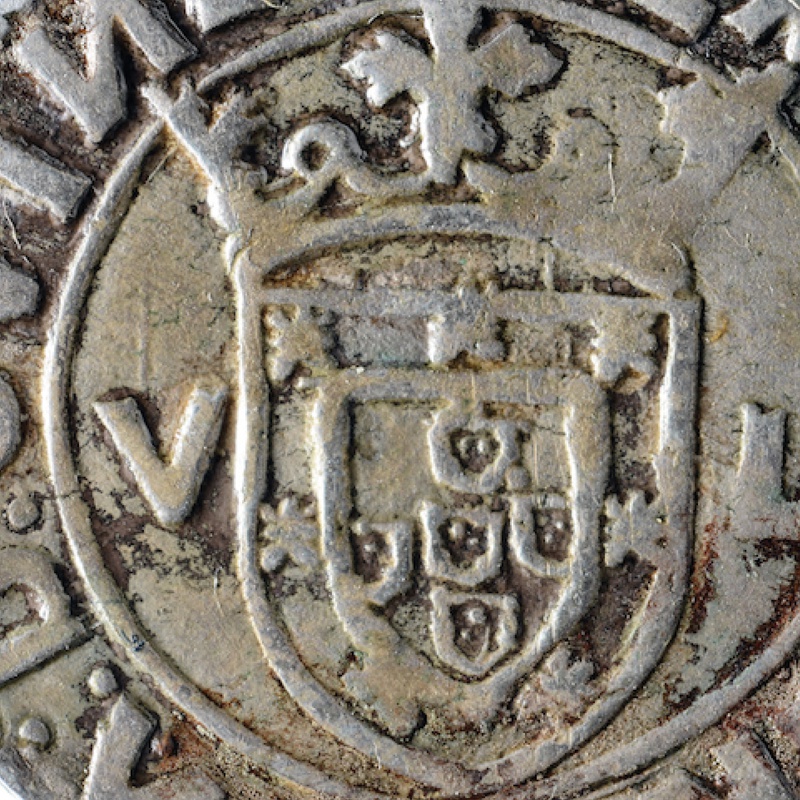
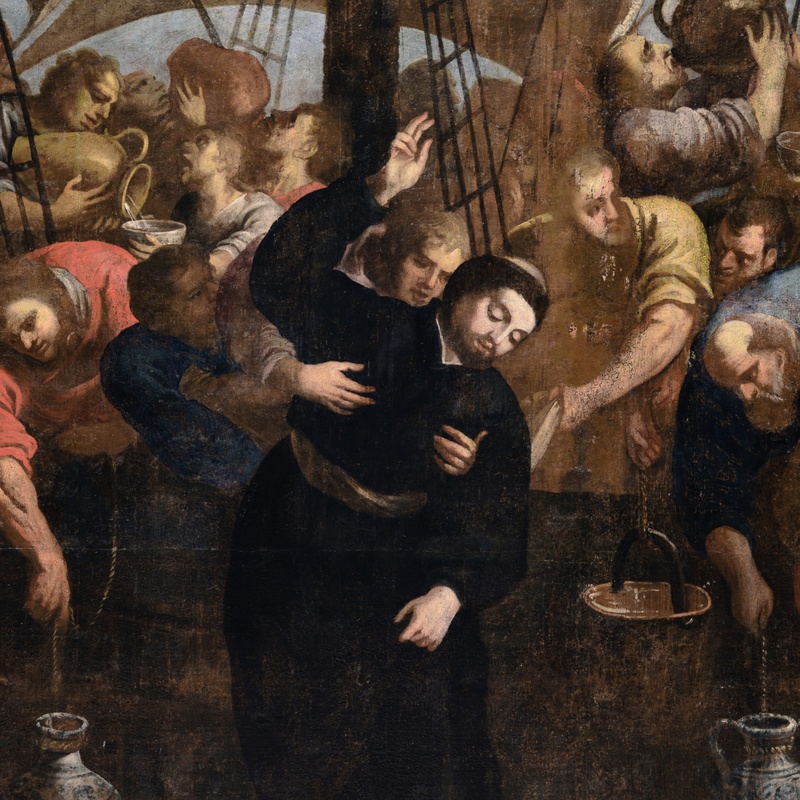
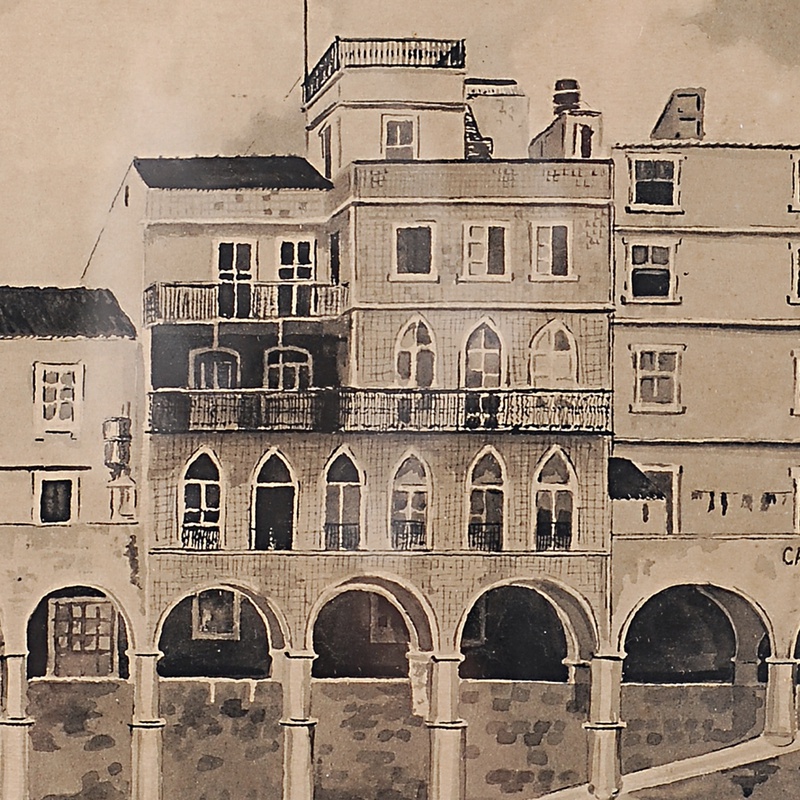
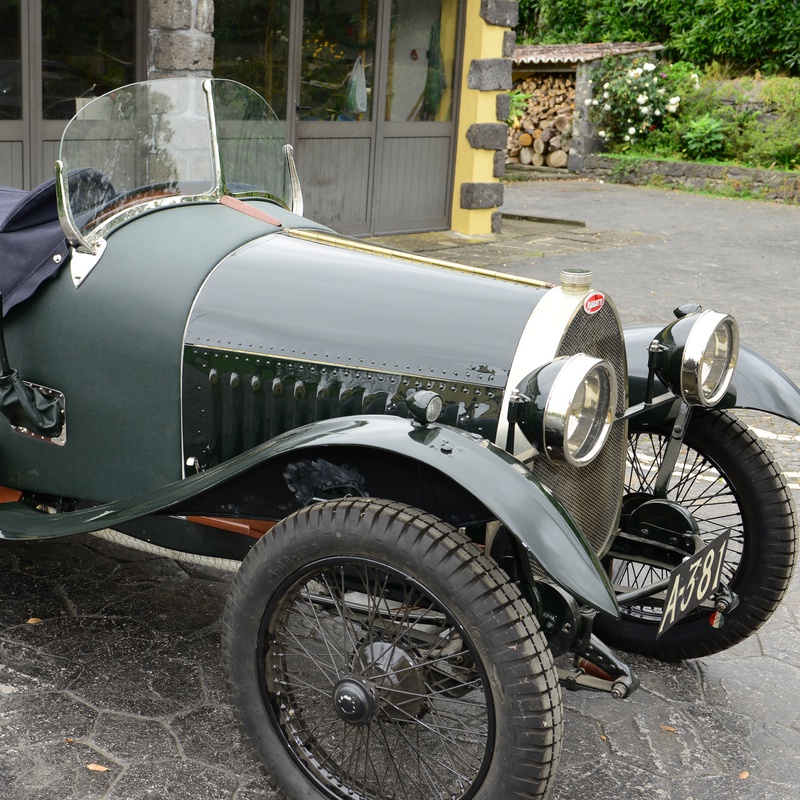
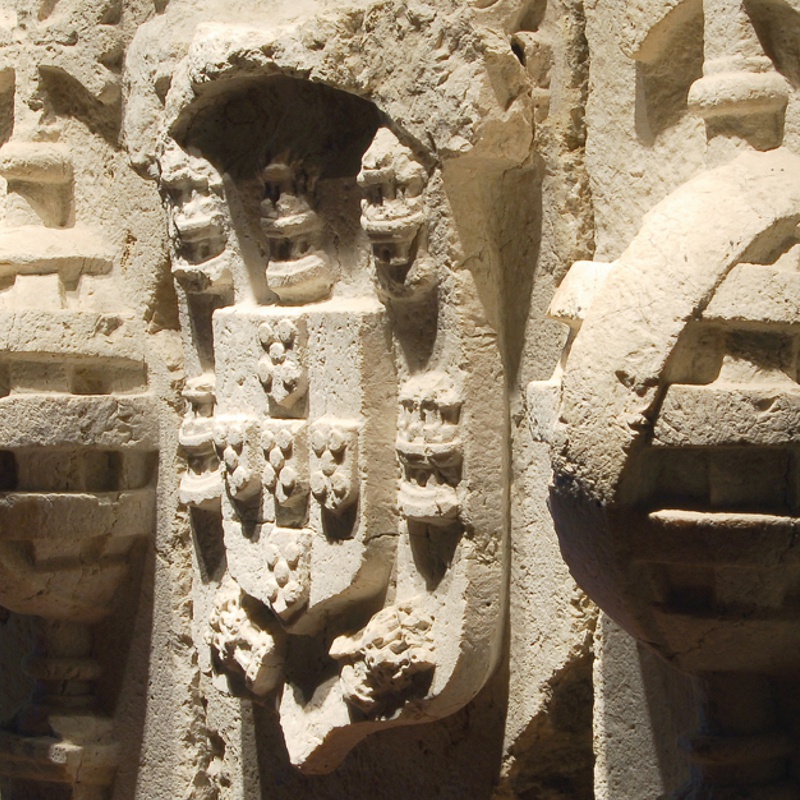
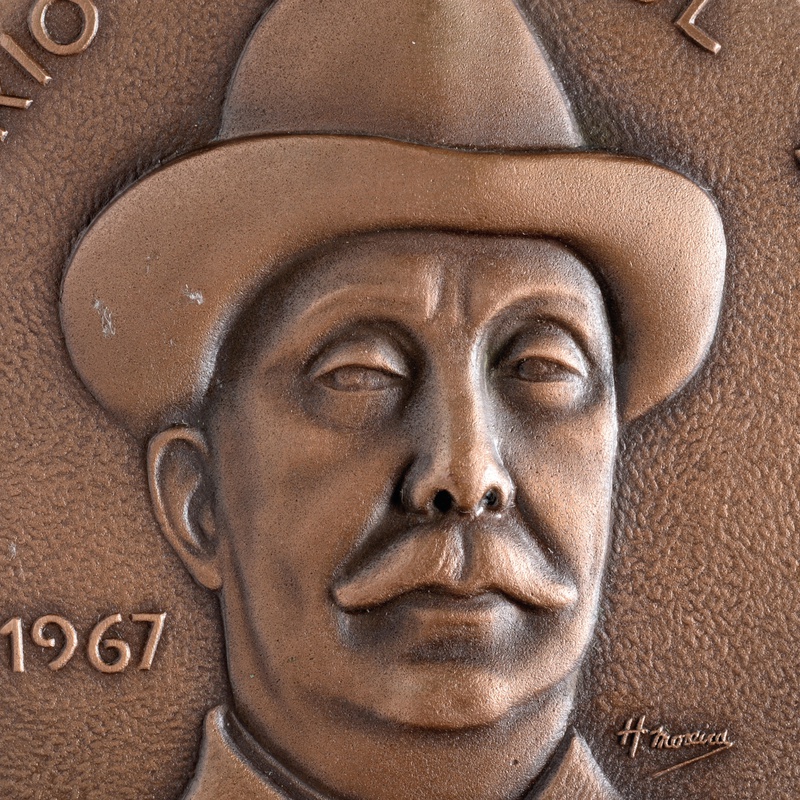
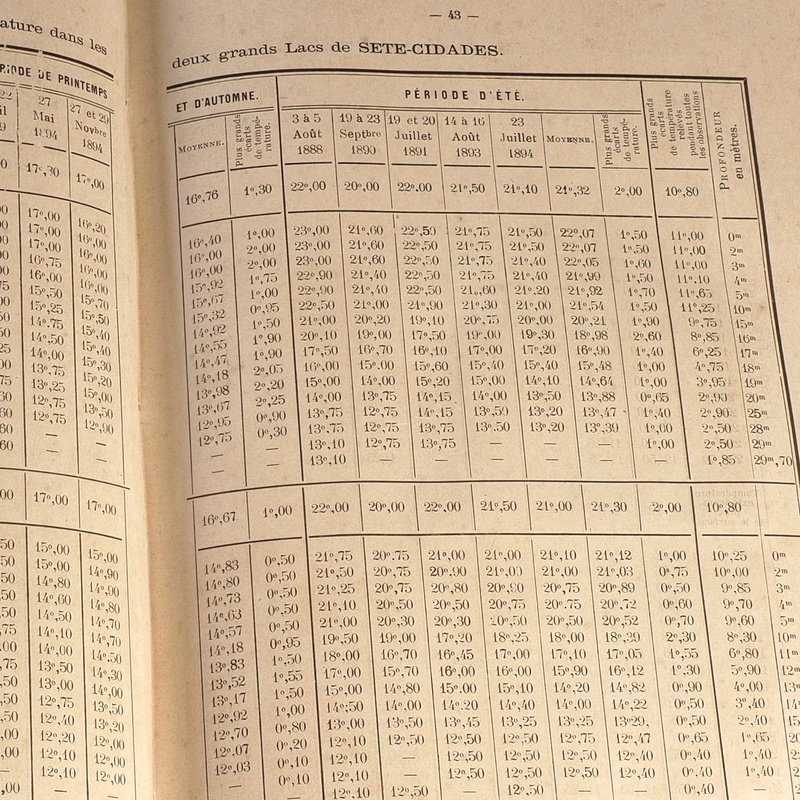
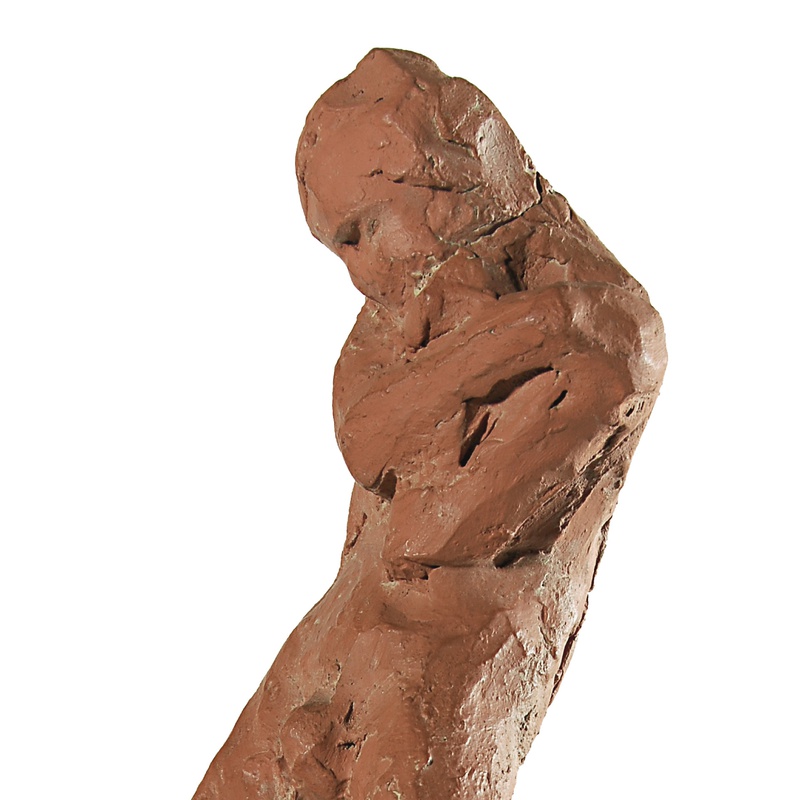
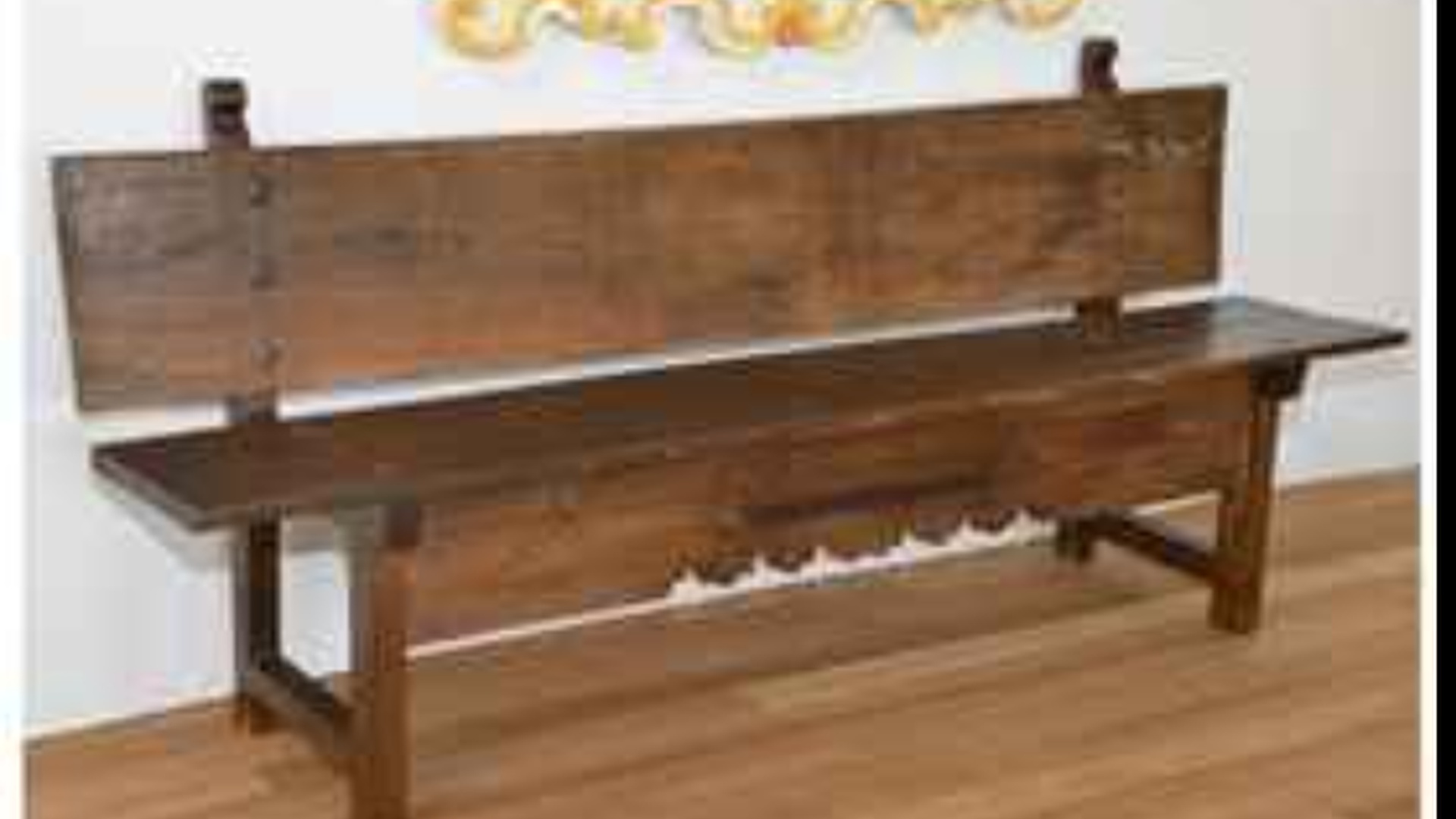
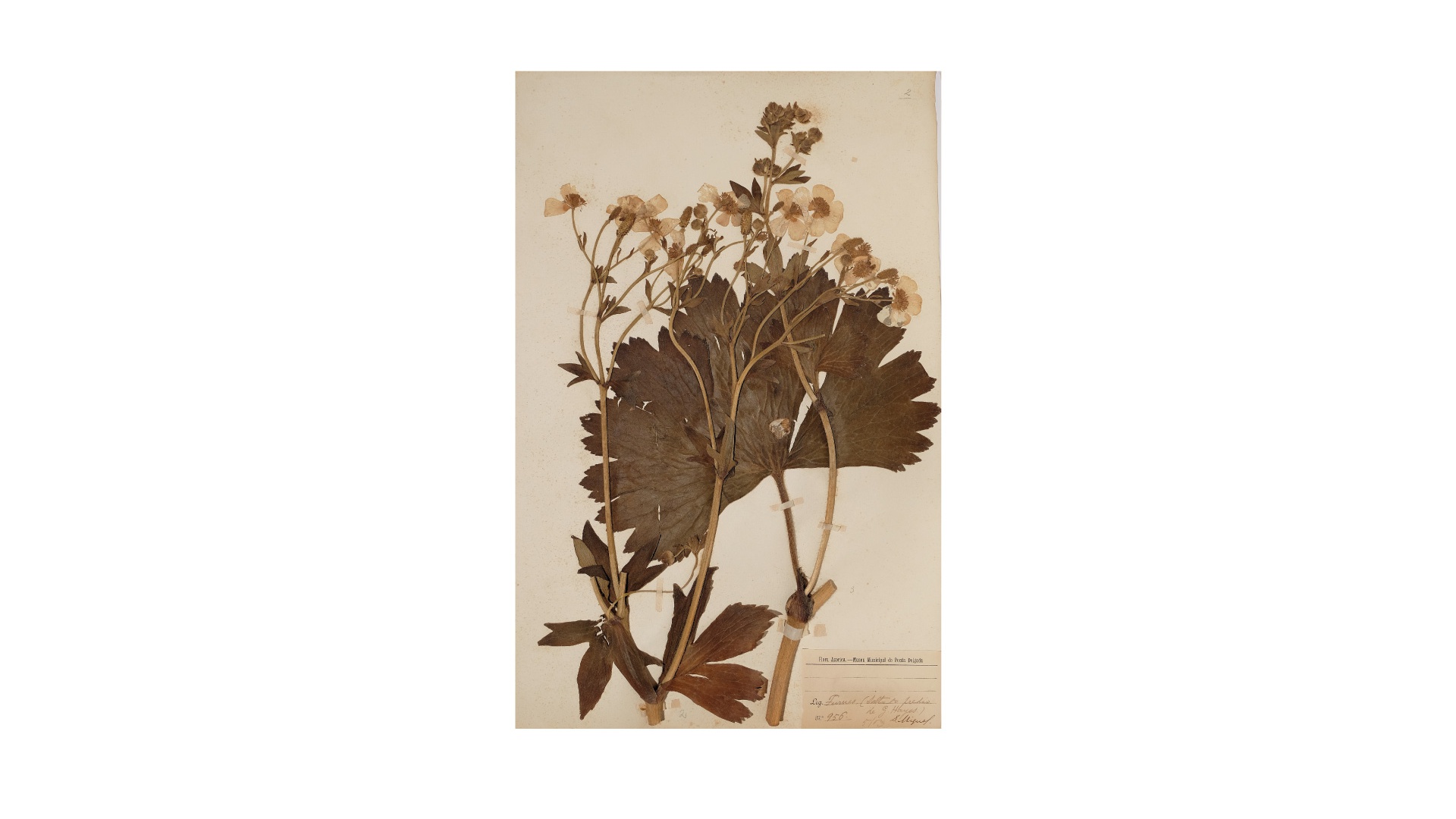
- Common name
- Azores Buttercup
- Scientific name
- Ranunculus cortusifolius Willd.
- Origin
- São Miguel Island, Furnas, Salto do Prédio de G. Hayes
- Collection date
- May 1903
- Inventory No.
- MCMb20002
The species Ranunculus cortusifolius Willd., commonly known as Azores buttercup, is endemic to Macaronesia (it only exists in the Azores, Madeira, Canaries, and Cape Verde). In the Azores, it occurs spontaneously in all the islands of the archipelago except in Graciosa and Santa Maria. Flowering occurs between May and June and the flowers are small and yellow. This sample was harvested in Furnas - São Miguel (Azores), in May of 1903, and herborized by Dr. Bruno Tavares Carreiro
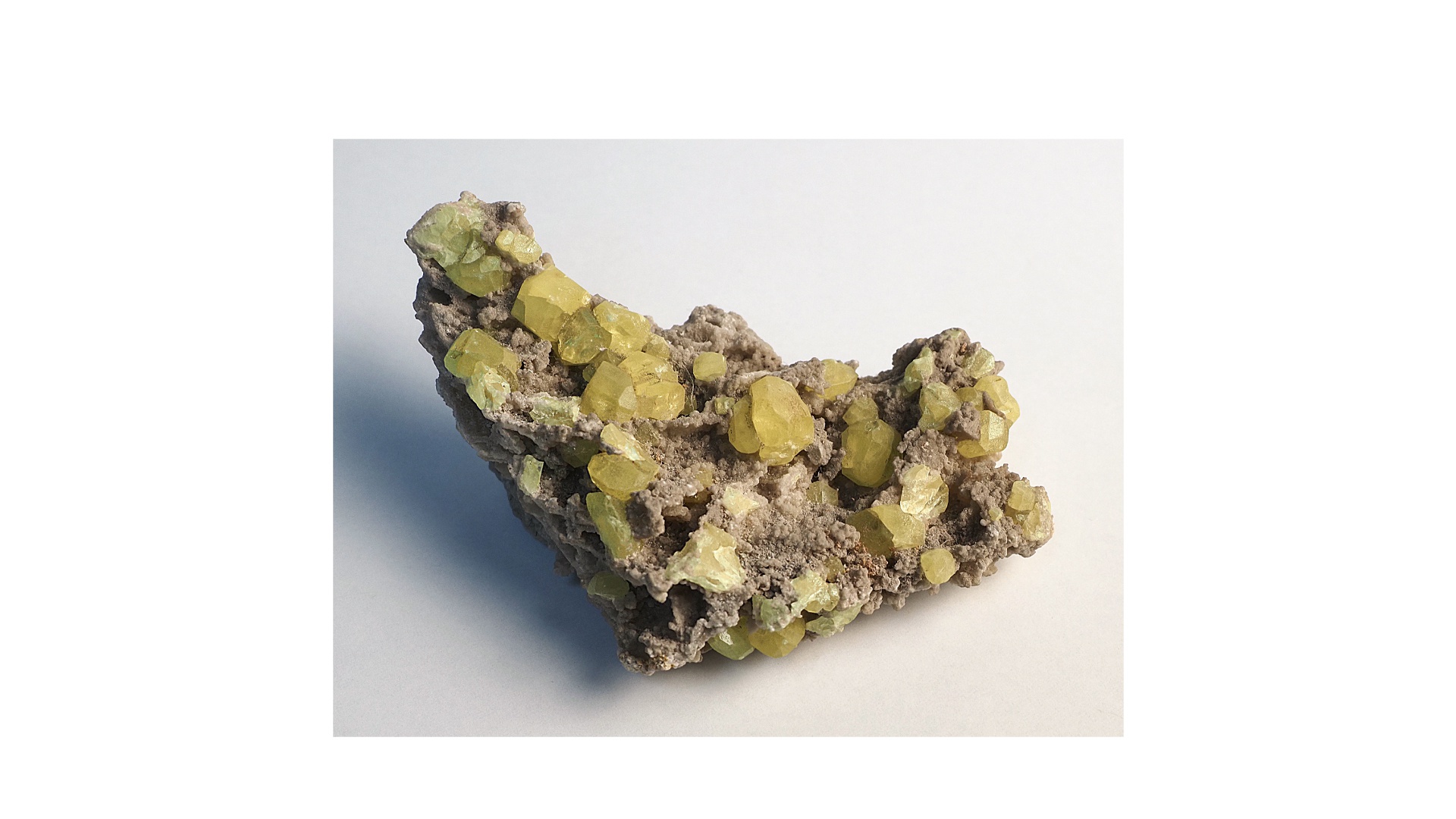
- Name
- Sulfur
- Origin
- Sicily, Italy
- Inventory No.
- MCMgm0195
This item is a mineral composed only of the chemical element of sulfur (S). It is a tasteless and odorless non-metal (the "sulfur smell" comes from its volatile compounds, such as hydrogen sulfide), easily recognized in the form of yellow crystals that occur in various minerals or even in its pure form (especially in volcanic regions). Sulfur is used in several industrial processes. For example, in the production of sulfuric acid for batteries, the manufacture of gunpowder and vulcanization of rubber. Sulfur also has uses as a fungicide, in the manufacture of fertilizer phosphates, matches and pyrotechnic material. [AE]
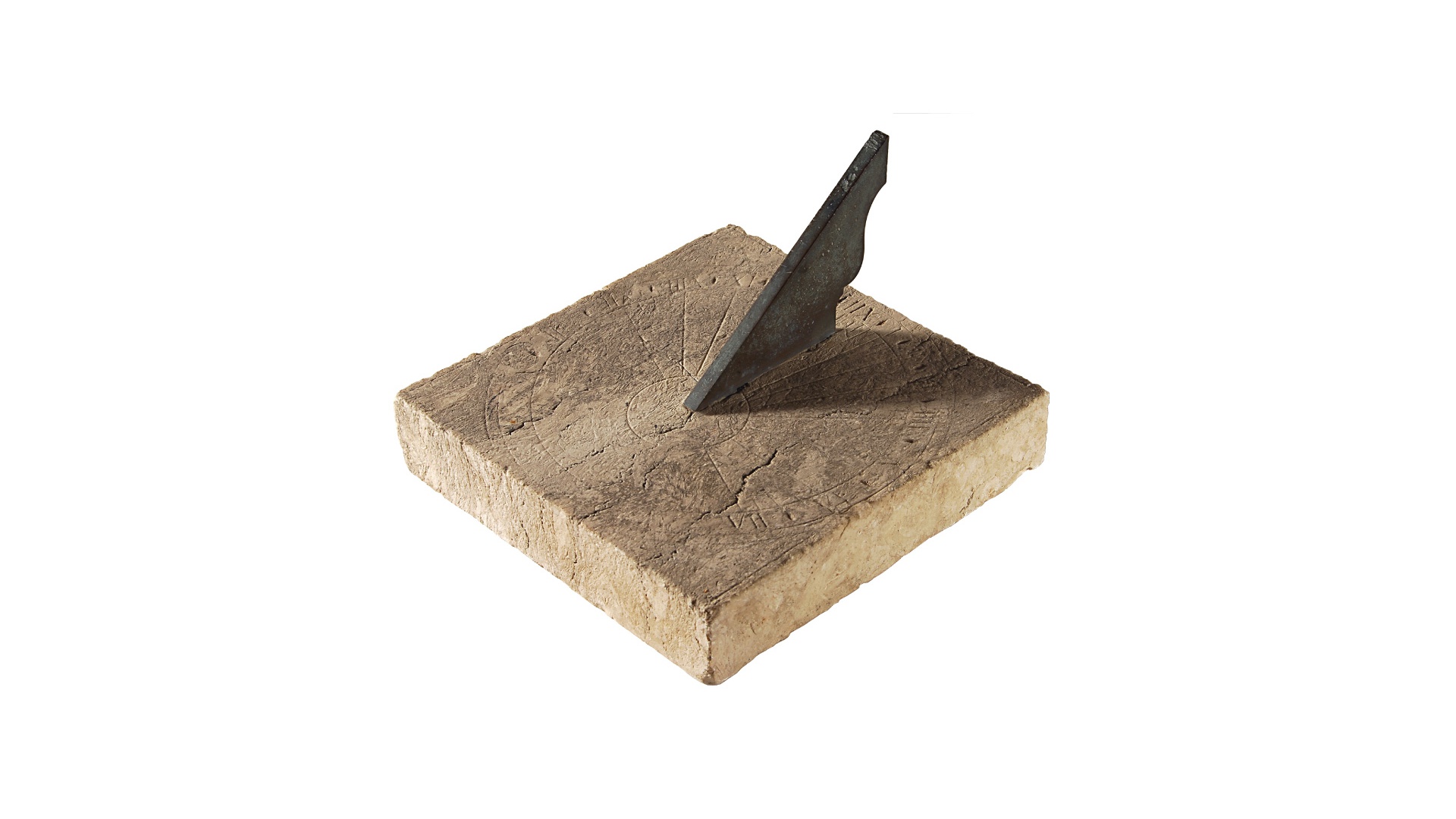
- Name
- Sun watch
- Date
- 1851 – 1900
- Materials
- Limestone and bronze
- Dimensions
- H 21.5 x L 32.7 x W 32.7 cmcm
- Provenance
- Solar do Botelho, Livramento
- Inventory No.
- MCM2426
Sundials measure the passage of time by observing the position of the shadow of a pointer when moving this star. This garden model belonged to Solar do Botelho, the former summer residence of the Count of Fonte Bela family. It consists of a square-shaped dial where lines are marked, forming a circumference, and Roman numerals indicating the hours. It also has a fixed plate, whose shadow projected on the dial acts as a pointer. As the position of the sun varies, the shadow of the plate (fixed pointer) moves across the surface of the dial, passing successively through the lines that indicate the hours. 12.06.2020 [SFS]
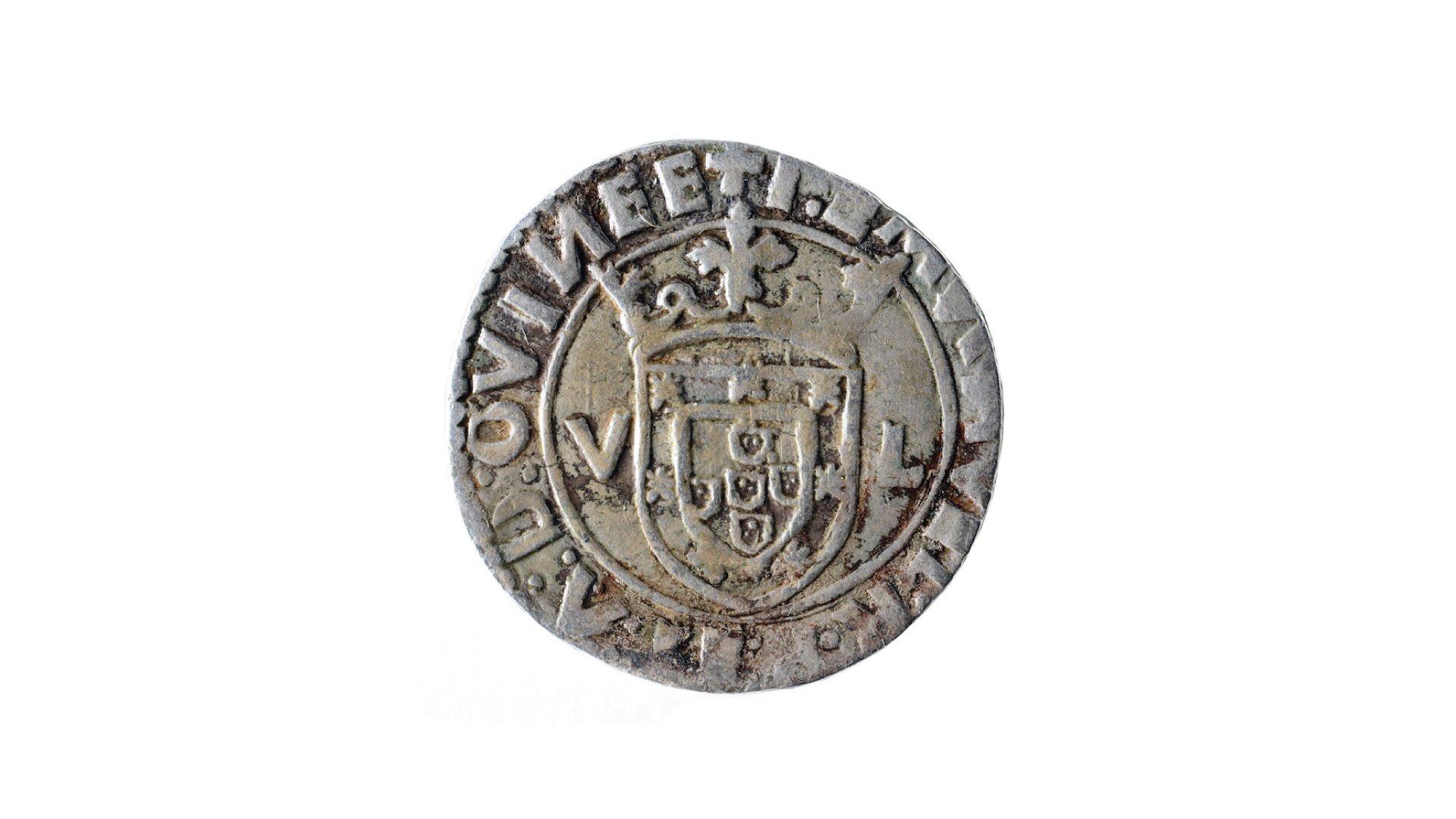
- Name
- Tostão, King Manuel I of Portugal
- Production Date
- 15th / 16th century
- Material and techniques
- Silver - Manual coinage
- Dimensions
- D. 28 mm
- Inventory No.
- MCM08254
The Tostão was first coined in Portugal during the reign of King Manuel I (1495-1521), with the face value of 100 Réis, and lasted throughout the centuries, despite some changes. Later, under the Republic, it became known for its face value of 10 Cents. The name "Tostão" comes from abroad. The Portuguese word originates from the French word, "Teston", and the Italian, "Testone", that symbolize the ruler in whose name the currency was coined. On the obverse, between smooth and punctuated circles one can read the caption, "I: EMANVEL: R: P: ET: A: D: GUINEE". In the center, weapons of the kingdom of King Manuel I between a "V" and "L ". On the reverse, the caption "IN + HOC + SIGNO + VINCES" (with this sign you will win), between smooth and punctuated circles and in the center, the Cross of the Order of Christ, with a dot in the middle and three at the top of the upper arm. [BR]
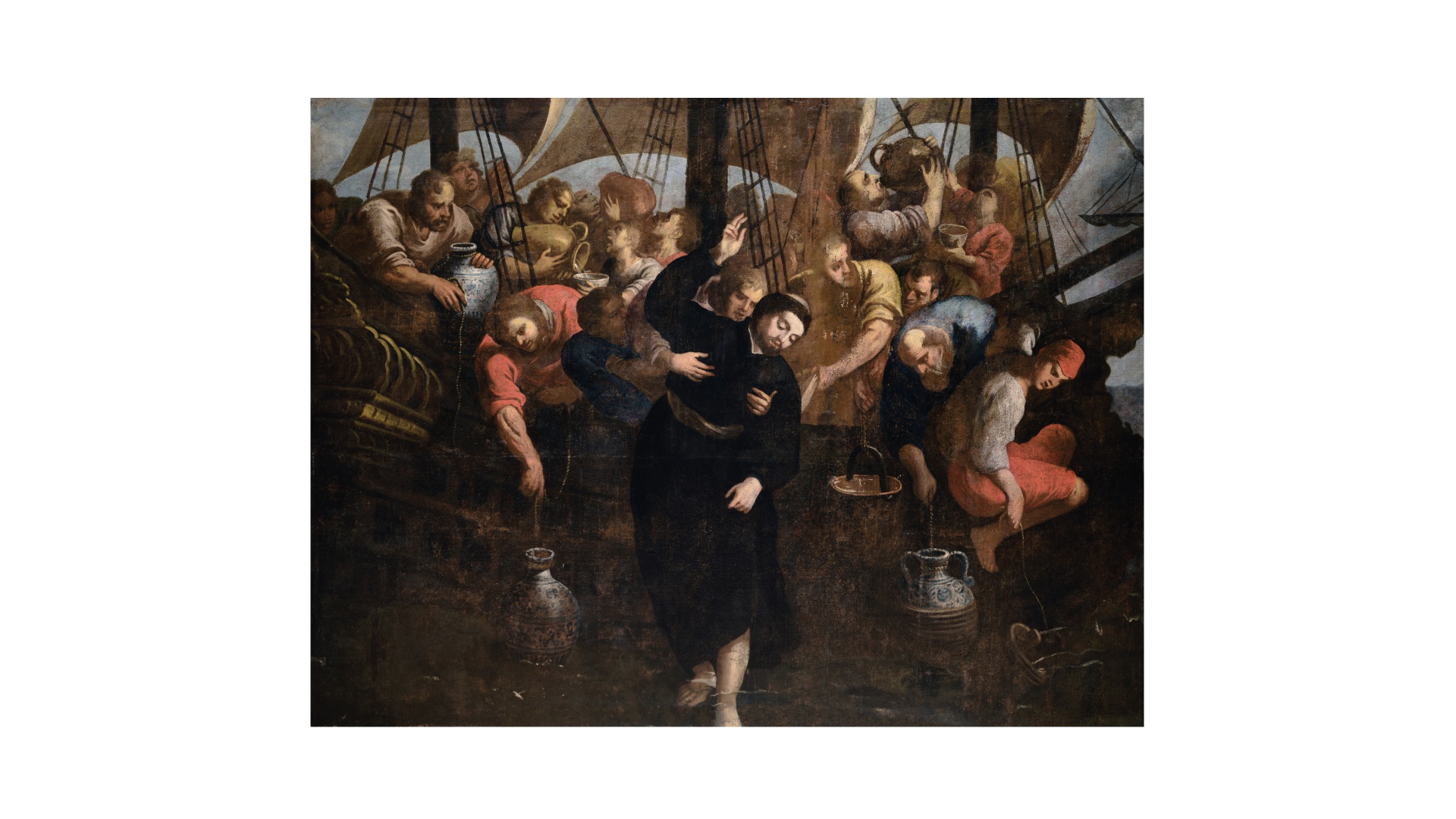
- Title
- Saint Francis Xavier and the Miracle of the Waters
- Author
- Bento Coelho da Silveira (1620-1708)
- Date
- 17th century (ca. 1670-1675)
- Materials
- Oil on canvas
- Dimensions
- H. 177 x W. 235 cm
- Inventory No.
- DMCM5710
Oil painting on canvas that depicts the sweetening of sea water, one of the miracles of St. Francis Xavier, decisive for his canonization. Testimonies collected at the time report that in 1551, during a trip to Malacca, the boat he was traveling on was caught in a calm and, having a shortage of drinking water on board, “Father Francis, who had a towel tied along his side, where he sat, put his foot in the salt water up to his toe. Only when he put his leg in the sea up to the knee, did the water become sweet”.
In this painting, porcelain pots from the East, painted in blue, are depicted. These were used by sailors to collect sweet water, and are similar to so many others that the Portuguese then traded throughout Europe.
This work is attributed to Bento Coelho da Silveira (ca 1620-1708), royal painter of King Pedro II and one of the most productive artists of his time. He might have been inspired by the homonym painting by André Reinoso, dated from 1619, that belongs to the Jesuit Church of São Roque, in Lisbon, to create this painting. [AF]
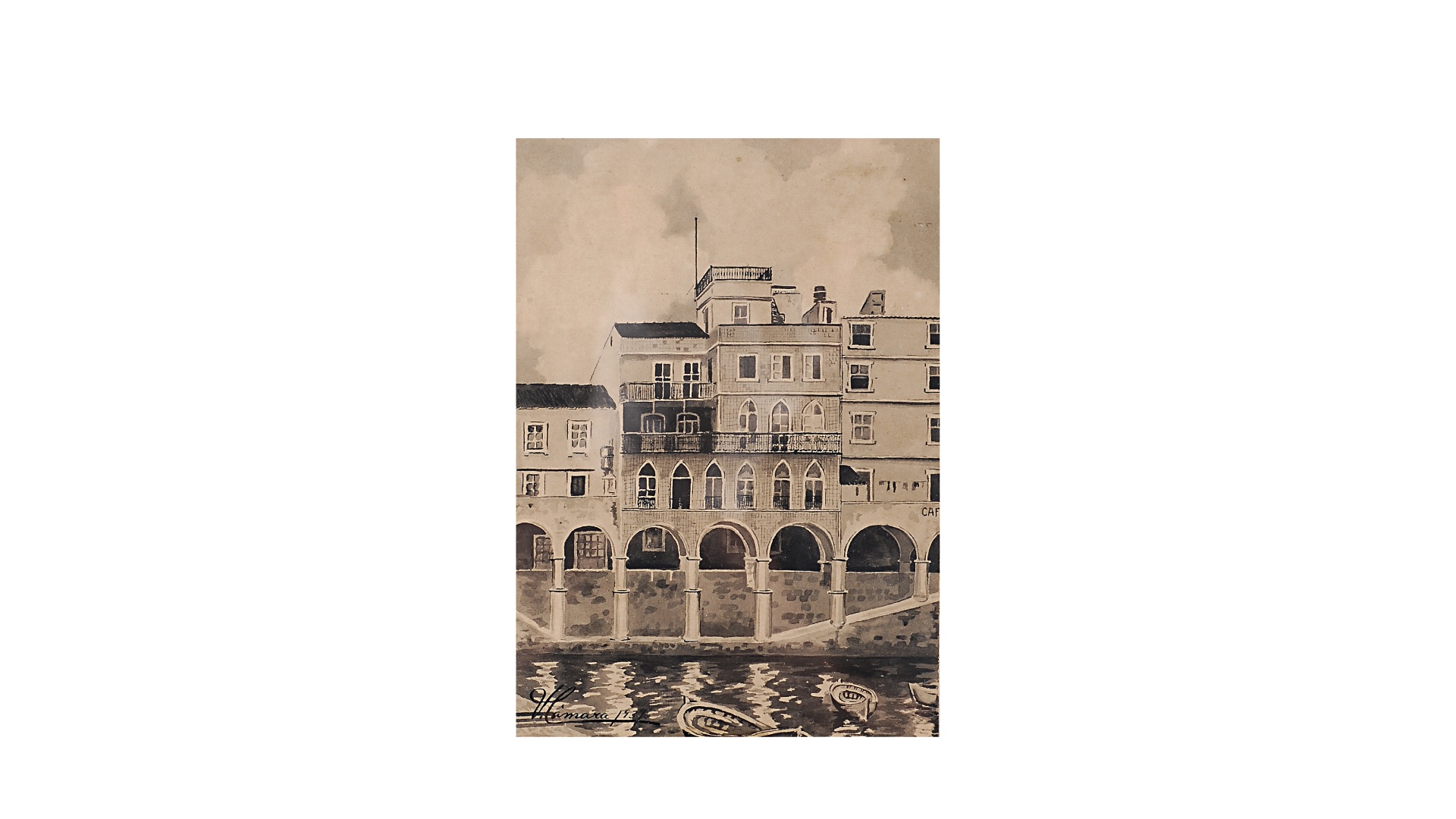
- Artist
- Victor Câmara (1921 – 1998)
- Title
- Ponta Delgada Customs Wharf
- Date
- 1939
- Material
- Watercolor on paper
- Dimensions
- 21.5 X 15 cm
- Inventory No.
- MCM7156
This watercolor depicts the old pier of Ponta Delgada, which was the center for the social, economic and cultural activity of the island's population, worthy of the city's brand image.
Along with the pier, in the foreground, the painting highlights the urban building next to the arcades, which would later be moved with the seafront renovation and the construction of the main avenue that dictated the embankment of the old pier in the 1950s. [SM]
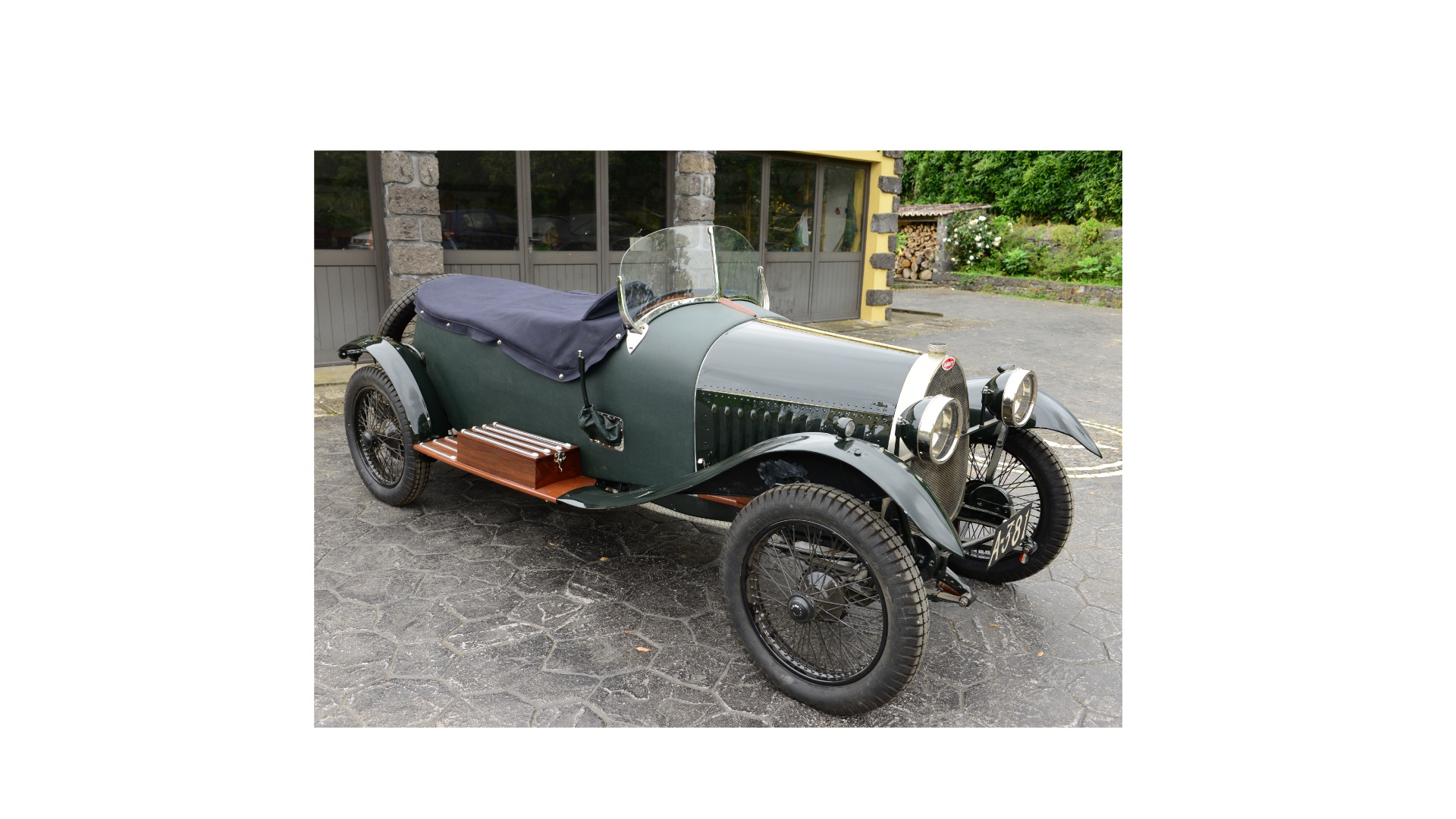
- Title
- Bugatti Brescia T 23
- Date
- 1923
- Origin
- Molsheim, Alsace, França
- Dimensions
- L 370 x W 140 cm
- Weight
- 780 kg
- Inventory No.
- MCM2957
The Bugatti Brescia T23 motor vehicle has been part of the Carlos Machado Museum’s collection since May 1997. It was registered with the Ponta Delgada Road Services in 1925 with the numerical reference A-381 and had as its first owner the Count of Albuquerque, Dr. Duarte Manuel Andrade Albuquerque Bettencourt. The chassis number 1870 is a model 8, with 3 seats. From October 2010 to December 2015, this vehicle was recovered by Dr. Ulf Smith, with the support in the administrative management of Commander Carlos Teixeira da Silva.
Today this vehicle is a reference in Motor Sports, having undeniable heritage value, both for its rarity in the context of the collections of the museums of the Regional Network of Museums of the Azores, as well as for its antiquity and testimony of experiences of São Miguel from the first decades of the 20th century. [SFS]
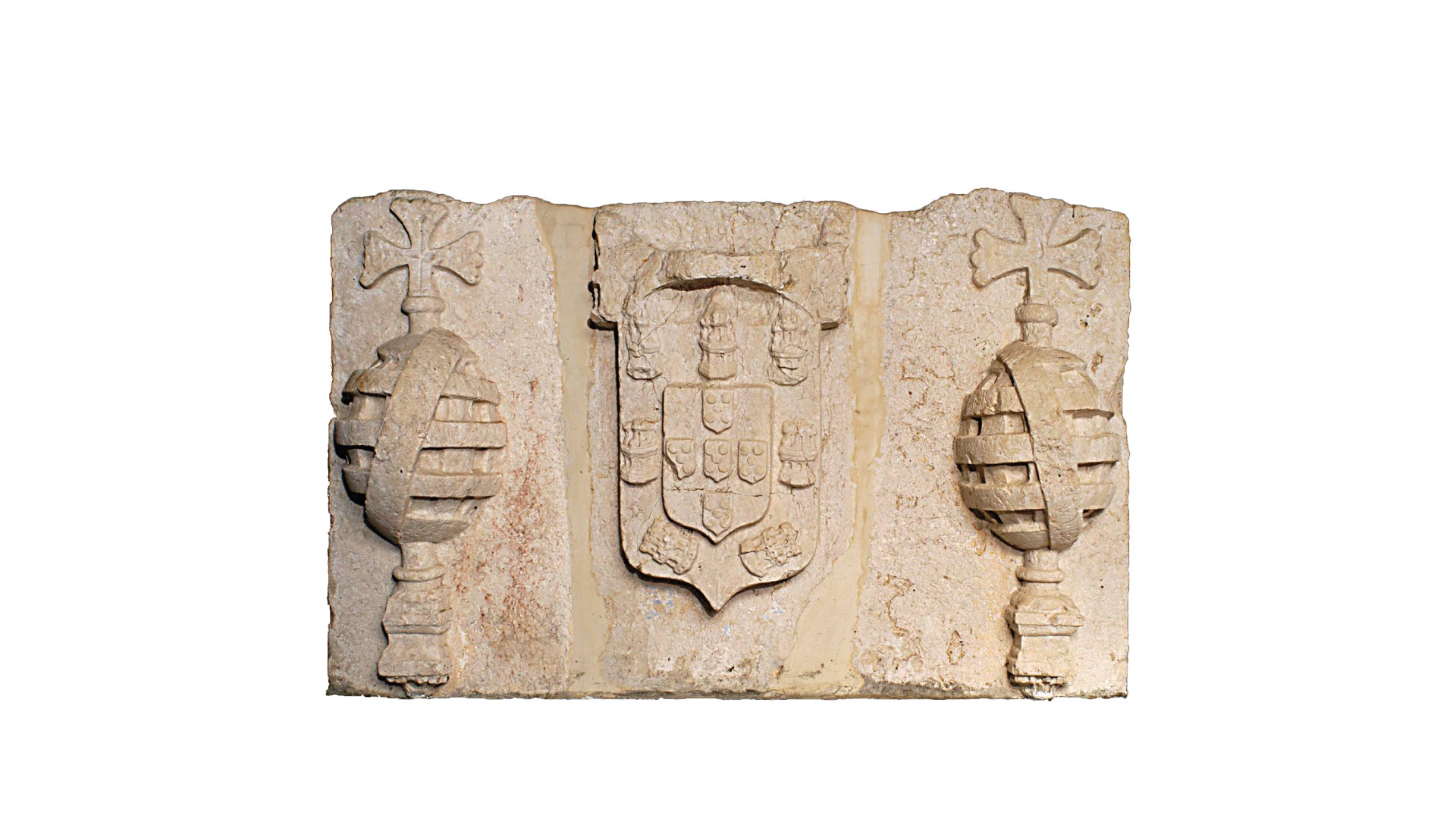
- Title
- Coat of arms of King Manuel I of Portugalame
- Date
- 16th century
- Material
- Lioz
- Dimensions
- H. 0.91 x W. 1.46 m
- Inventory No.
- MCM40001
The Manueline national coat of arms, which is made of lioz stone, is placed at the entrance of the exhibition gallery of the Carlos Machado Museum’s Sacred Art Center. This piece has three main elements: the national shield in the center, flanked by two armillary spheres on each side, that symbolize a time of adventures and discoveries by the Portuguese around the world. This coat of arms was donated to the Museum by the Lyceum of Ponta Delgada, where it had been since 1579, when it was still a palace and the official residence of D. Rui Gonçalves da Câmara. [HAC]
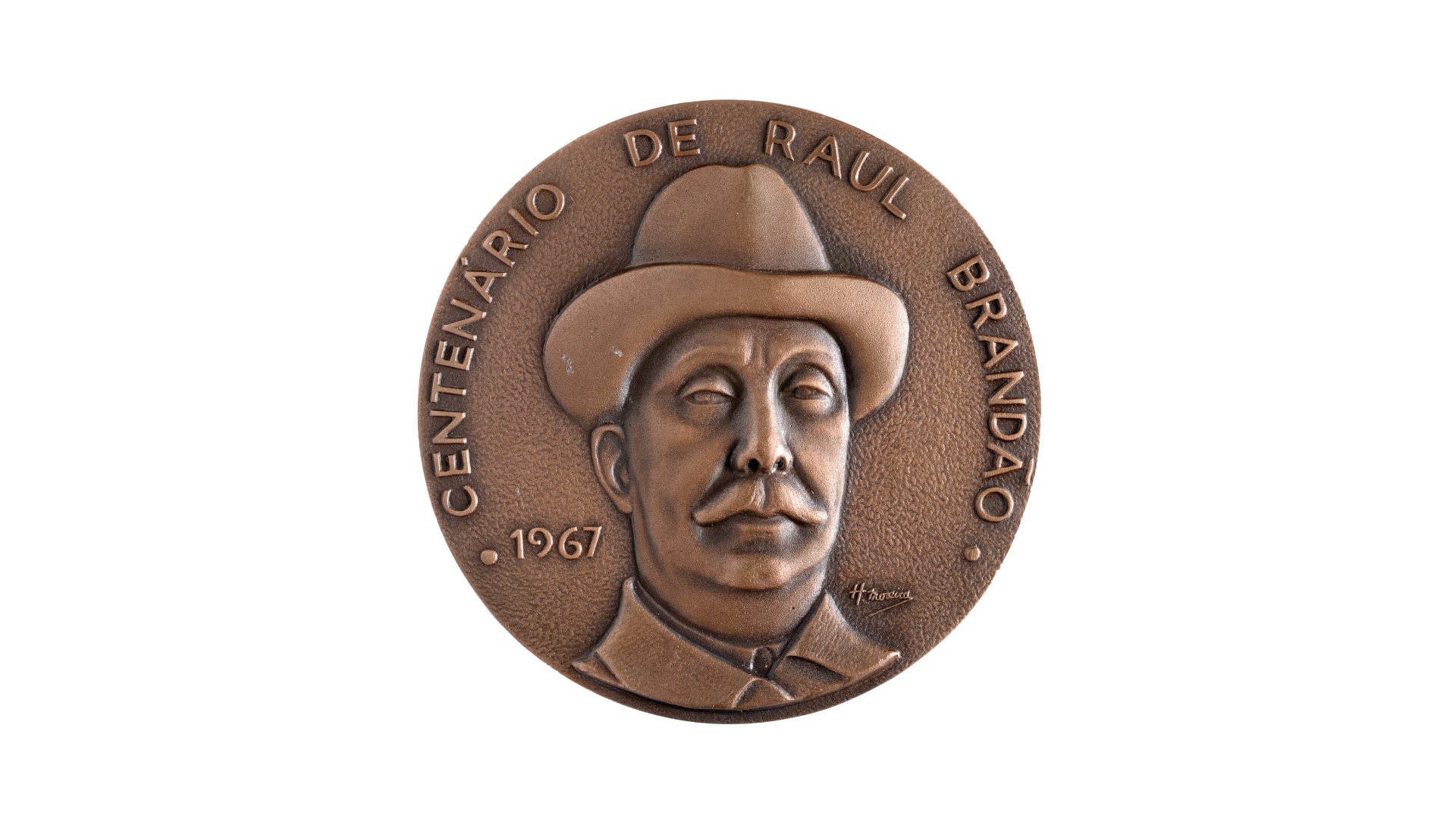
- Name
- Commemorative of the Centenary of the Birth of Raul Brandão
- Author
- Henrique Moreira (1890-1979)
- Date
- 1967
- Material
- Bronze
- Dimensions
- D 8.1 x W 0.4 cm
- Inventory No.
- MCM12239
Obverse: In the center, slightly turned to the right, there is a bust of Raul Brandão. On the edge, from left to right, the caption "CENTENÁRIO DE RAUL BRANDÃO". On the left side of the bust the date "1967" and on the right side the signature of the author - H. Moreira. Reverse: In the center and vertically there is a column, on the left side of it, three male figures, one sitting and two standing, representing "OS POBRES" (The Poor), as inscribed on the edge. On the right side, two female figures seated and a third male figure standing, representing "OS PESCADORES" (The Fisherman), as inscribed on the edge. Below, in three lines, "INSIGNE WRITER / NASCIDO / NA FOZ-DO-DOURO". [
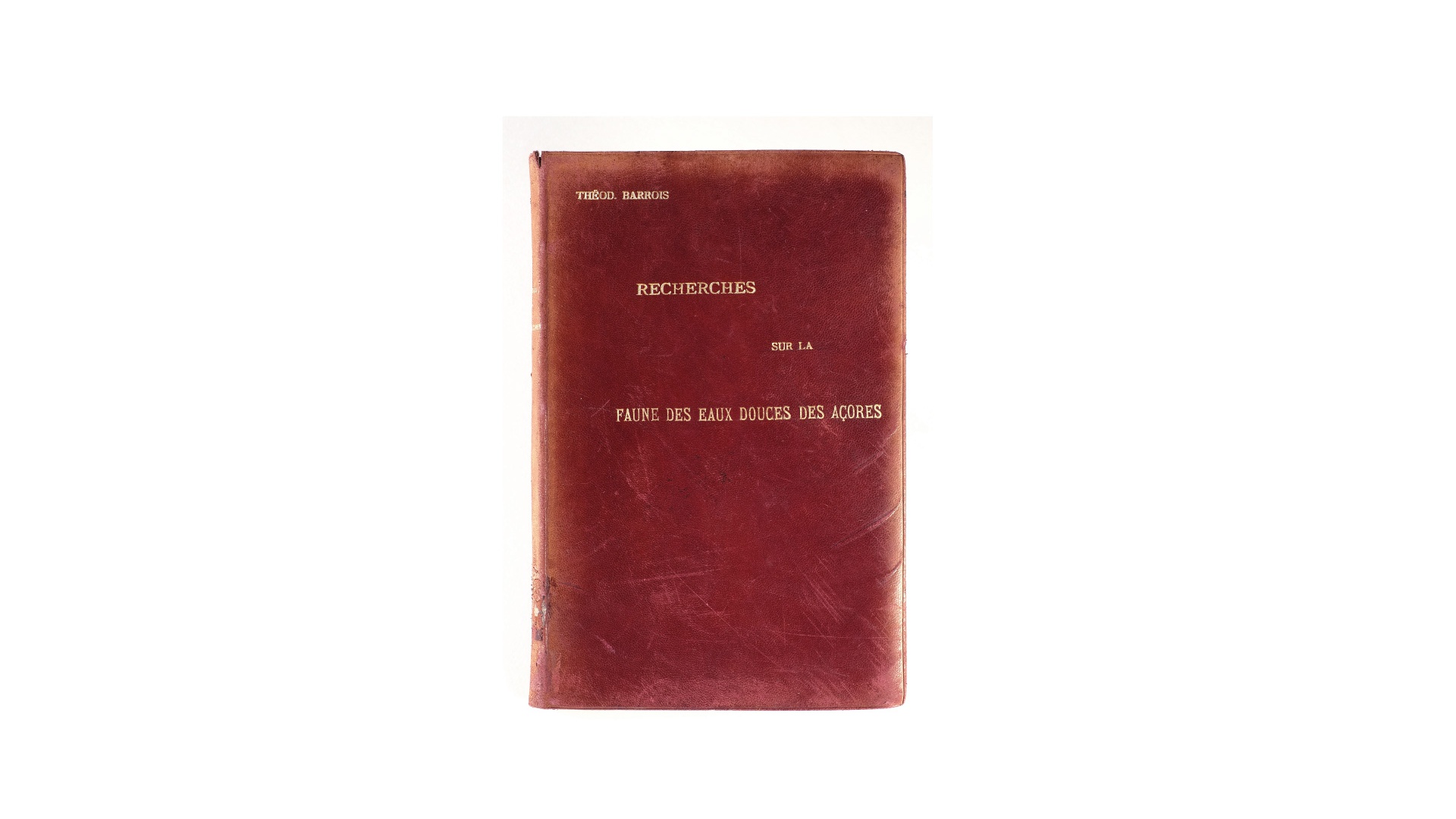
- Author
- Théodore Barrios
- Title
- "Recherches sur la faune des eaux douces des Açores"
- Date
- 1896
- Number of pages
- 172 p.
- Nº Inventory No.
- MCM 392
Théodore Barrios, a French physician and naturalist, devoted part of his life to zoological studies in various parts of the world. In 1887, he lived in the Azores for six months, where he published this and other works as a result of his research on the islands. In the beginning of this book, a printed dedication to Colonel Francisco Afonso Chaves can be read in which he thanks the support provided and praises the admiration for the naturalist from São Miguel. [TA]
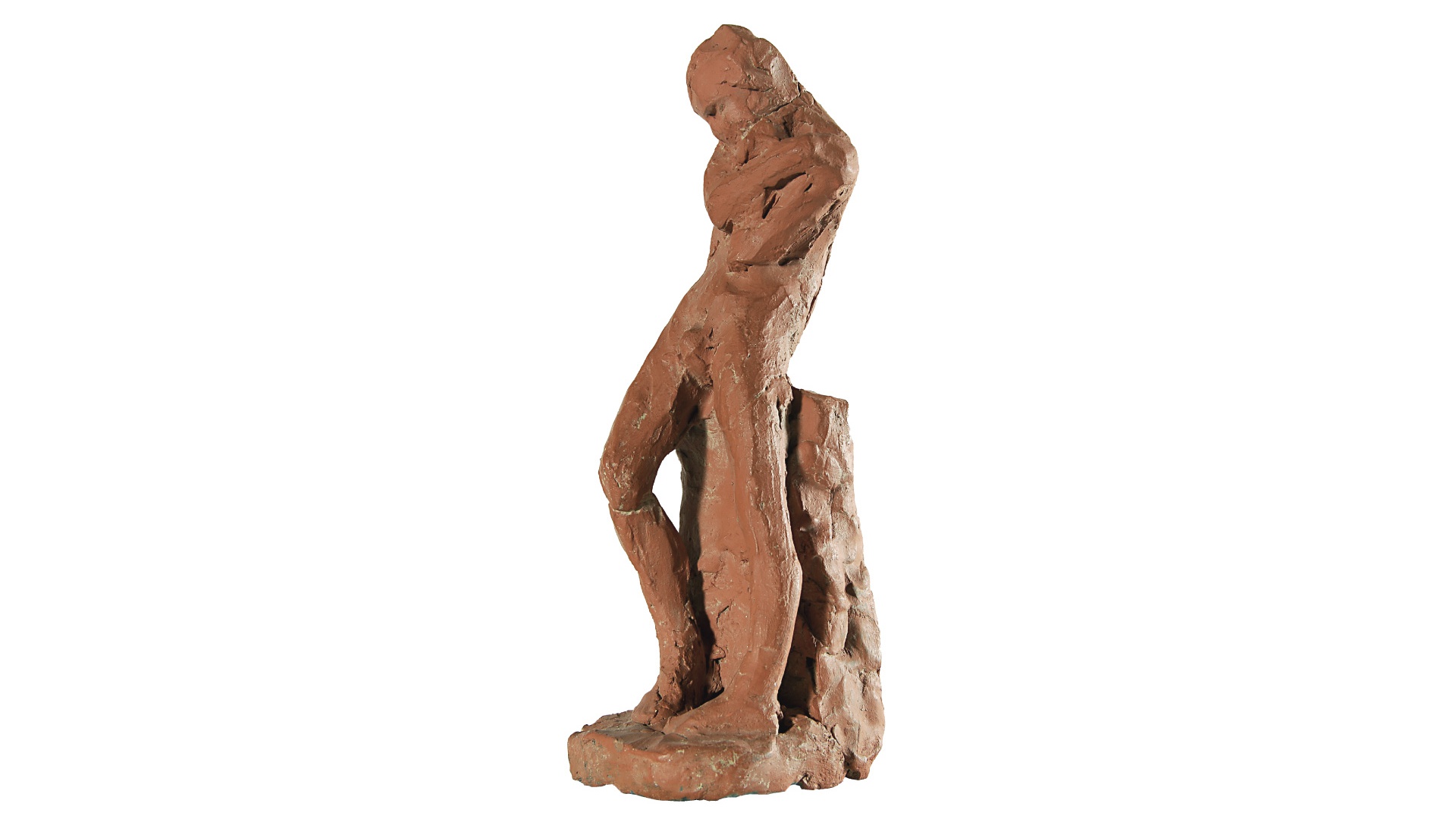
- Artist
- Canto da Maya (1890 – 1981)
- Title
- Sketch for «Despair of Doubt»
- Date
- Undated (ca. 1915)
- Material
- Painted terracotta
- Dimensions
- 28 x 9.5 x 11 cm
- Inventory No.
- MCM5753
In this sketch, the essential features of «Despair of Doubt» are outlined. This final work was presented in 1916 at the 8th exhibition of the National Society of Fine Arts in Lisbon. In this exhibition, the State acquired this piece for the collection of the National Museum of Contemporary Art.
This work is the most significant of the Great War period (1914 - 1918), after the return of Canto da Maya from Paris and Switzerland where he deepened his studies of Sculpture between 1912 and 1914. It shows the author's influence by Rodin, both in the symbolist nature of the title itself, as well as in the pose, attitude and anatomical modeling of the tormented man, which reminds us of Rodin's The Thinker. [SM]

- Name
- Bench with backrest
- Date
- 20th century
- Dimensions
- L 210 x H 93 x D 50
- Inventory No.
- MCM44199
Bench with backrest produced in the 17th century style. Although with a simple design, it displays on the seat and backrest, a decoration made with incisions of geometric motifs. Under the seat it has a rim with carvings in the center. It was purchased in Oporto with a table in August of 1959. This set furnished the boardroom of the Carlos Machado Museum, which was located in the Sala da Roda of the former Santo Andre Convent. [CMA]
